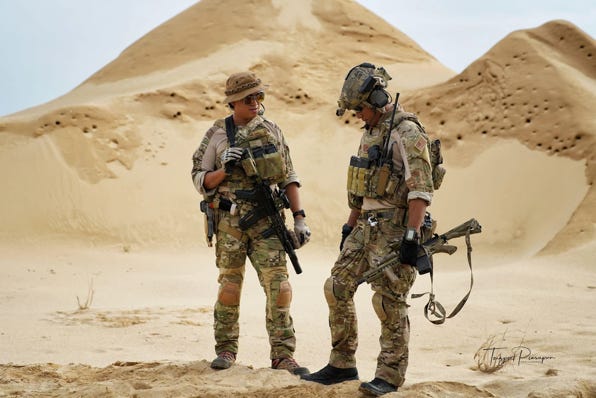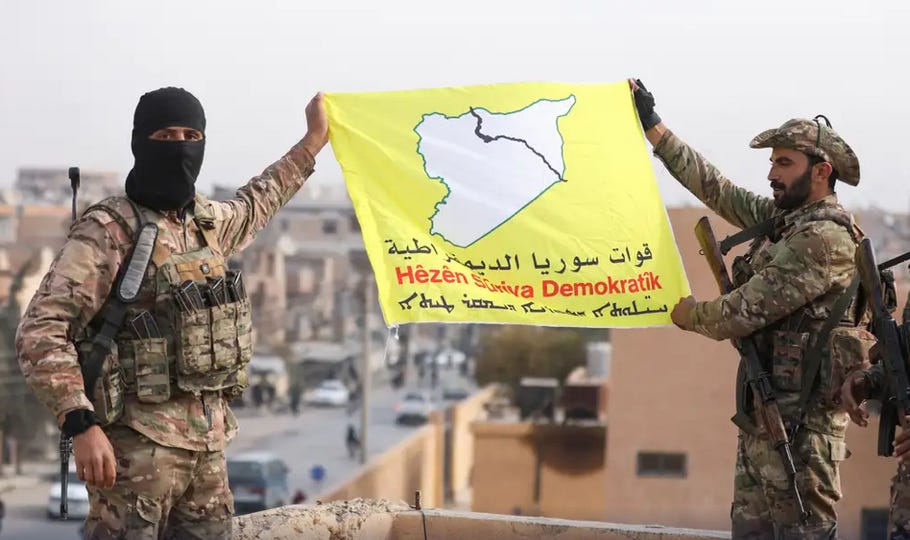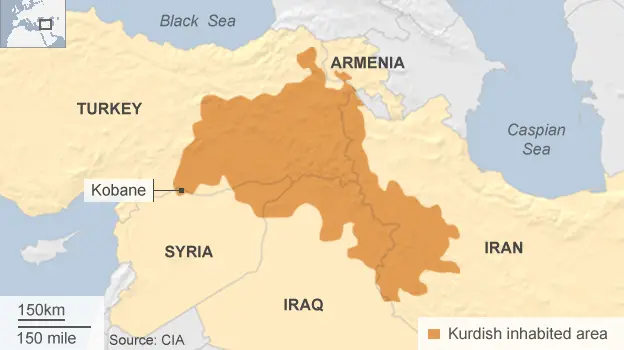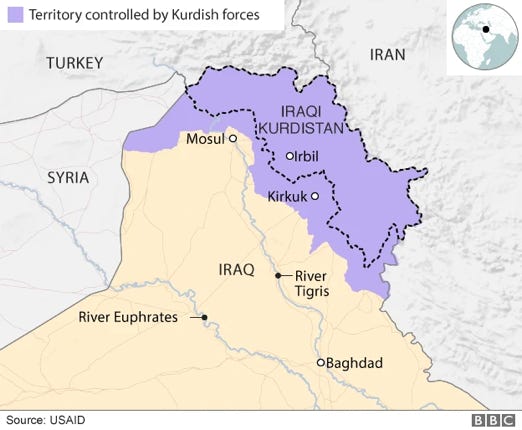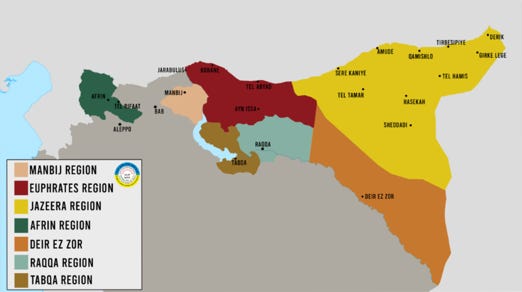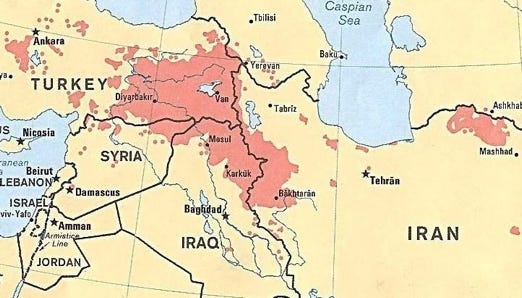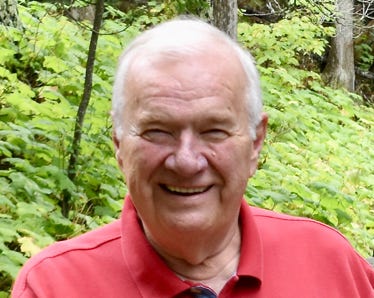DUTY, HONOR, COURAGE, RESILIANCE
Talking Proud: Service & Sacrifice
Syria: A fractured state
Venture into the unfamiliar
The Kurds and the US
US air power alone would not do the job against IS in Syria. Ground forces in significant numbers were essential. Finding a partner force in Syria proved very difficult for the US. It turned to the Kurdish People’s Protection Units (YPG).
The YPG wanted to create a Kurdish state. It was anti-IS and anti-Assad, and its people were willing to fight to those ends. The YPG took the lead in joining with a makeshift Syrian Arab Coalition to provide the backbone of the Syrian Democratic Forces (SDF).
The SDF became the ground force the Americans needed. In effect, the US has been helping the Kurds create a Kurdish state in Syria, which may or may not join up with the Kurdish autonomous region in Iraq and force the question on Turkey and Iran.
Defining a “Kurd” has proven challenging for me.
BBC has described the Kurds as,
“One of the indigenous peoples of the Mesopotamian plains and the highlands in what are now south-eastern Turkey, north-eastern Syria, northern Iraq, north-western Iran, and south-western Armenia.”
National Geographic says Kurds are an ethnic group, about 30 million strong, “nestled on the margins of Turkey, Iran, Iraq, and Syria.” They do not share a religious identity, though most of them are Sunni Muslims. They do have an ethnic identity and a common language.
The Washington Kurdish Institute says,
“Kurdistan is the ancestral homeland of the Kurds, the fourth largest ethnic group of the Middle East. The Kurdish homeland, Kurdistan, is, in many places, mountainous and currently lies within the borders of the countries of Iraq, Iran, Turkey, and Syria.
“The Kurdish homeland remains divided between various states, with the Kurds rendered a minority within nation-states that, to varying degrees, denied the Kurdish identity. The Kurdish people, divided between four states, remain the world’s largest ethnic group without a nation-state of their own.”
There was talk of a Kurdish state following WWI, but it did not develop. The Council on Foreign Relations summarizes “The Kurds Long Struggle with Statelessness, 1920-2022.” I commend it to you.
There is some certainty about the Kurds and Kurdistan in Iraq. The Kurds established a Kurdistan Regional Government (KRG) in 1992 as a semi-autonomous region of Iraq. The KRG's armed forces are the Peshmerga. The area was recognized in Iraq’s 2005 constitution. It encompasses the Dohuk, Arbil (Erbil), and Sulaymaniyah Governorates of northern Iraq.
Some have referred to Iraq Kurdistan as Eastern Kurdistan. That is because the Kurds envision their Kurdish state as joining other areas in other countries, as you will see in a moment.
In March 2016, Kurds in northern Syria created their autonomous region, the Autonomous Administration of North and East Syria (AANES). Established in 2018, it formed seven regional administrations: Jazeera, Afrin, Euphrates (al-Furat), Manbij, Tabqa, Raqqa, and Der Al-Zor.
The AANES, also known as Rojava, encompasses all of Syria east of the Euphrates River and the Afrin administration region in the northwest.
Most governments, including Syria, have not recognized this de facto autonomous region. Jordi Tejel, a professor of international history in Geneva, described Rojava as a “self-declared Kurdish ‘federal’ scheme in Northern Syria.”
Some have referred to this “self-declared Kurdish ‘federal’ scheme” in Syria as Western Kurdistan. It aims to join Eastern Kurdistan in Iraq, Northern Kurdistan in Turkey, and Southern Kurdistan in Iran and achieve a single state of Kurdistan, goals far from becoming a reality.
For our purposes, the Syrian Defense Force (SDF) is the military wing of the AANES and the ground component of CJTF-OIR. The SDF is mainly a Kurdish force but includes Arab rebels and militias. The US has been supporting the SDF and using it as its ground force against the IS and, where appropriate, against the Assad government.
Before continuing, I want to draw your attention to this map that NPR showed. It is similar to the one I showed you earlier. The orange areas reflect areas with a large Kurdish population. Note that Kurds inhabit much of southeastern Turkey, a huge bone of contention for the Turks.
The Kurdish population in Syria is mainly in the north, along the border with Turkey. The Kurdish population in Syria is small when compared to those in other countries. It amounts to about 15 percent of the Syrian population but is said to be the largest ethnic minority.
The following map shows the area claimed by the AANES. The Kurds claim about one-third of Syria, from east of the Euphrates River to the Afrin area in the northwest. That is far beyond what their population distribution merits. I suspect this is because the Kurds want to control most of Syria’s oil and gas resources, which lie east of the Euphrates River.
Sirwan Kajjo quotes Ahed al-Hendi, a Syrian affairs analyst based in Washington,
"For the Kurdish administration, controlling oilfields could be the biggest leverage point and the most vulnerable one at the same time. Controlling the oil means all eyes will be on the Kurds, including different hostile powers such as Turkey and the many Syrian rebel groups."
Kajjo continued, “Hendi added that Kurds could leverage their control over oil resources if they successfully integrate with the new Syrian state and demonstrate a willingness to contribute to the country's new phase.”
Hendi added,
“Controlling oil is a sovereignty matter. It belongs to the Syrian state. The Kurds can negotiate a proportional share of oil revenues as part of their integration."
Click to zoom graphic-photo
